Theatrics and precision: Inside the exclusive auctions selling the world’s most expensive watches
The watch industry is reaping unprecedented profits, and public sales events are going through a golden moment. EL PAÍS was present in one led by auctioneer extraordinaire Aurel Bacs in Geneva
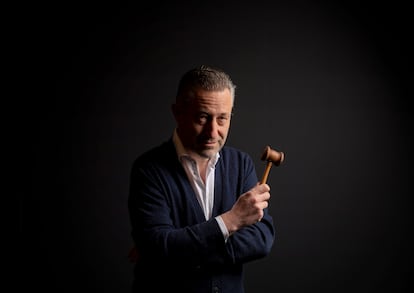
The gavel is the auctioneer’s instrument. His amulet, too: in order to photograph Aurel Bacs with his, we had to wait for a few minutes while an assistant went to get the ritual object from his office. Bacs, the man behind the most high-profile watch auctions in history, uses a light olive wood hammer with a turned handle. In the final stretch of each lot, he holds it up in the air with his arm raised in a questioning gesture intended to get the audience’s adrenaline pumping. “We already know that this watch has it all; now we just need to agree on how much it is worth,” he says, theatrically, as the image of a yellow gold Patek Philippe with chronograph and perpetual calendar is shown behind him. The watch was sold by the Beyer jewelry house in 1967; only four units of this model were made, with the name of the jeweler on the moon phase subdial, and this is the only one for sale. This same watch had already passed through his hands in 2002 when it was acquired by a specialized collector. Twenty-one years later, it is back on sale. After a few minutes and a symbolic struggle, the hammer falls when the counter on the screen reads 690,000 Swiss francs. With the 27% commission for the auction house, this represents an outlay of 876,000 Swiss francs ($998,000) for the happy buyer. “Sold!” The audience applauds.
The Phillips watch auction held in Geneva in early November takes place in a specially built pavilion in the garden of La Réserve, a luxury hotel on the shores of Lake Geneva. The felt that covers the floor and walls muffles the noise. During the five hours that each session lasts, only the auctioneer’s voice is heard. The murmuring of the agents that talk to potential buyers on the phone is barely background noise. Discretion prevails: some even cover their mouths when they speak. It is a vertiginous liturgy. No champagne glasses, no piano music. The auction begins to the sound of Can’t Stop, by Red Hot Chili Peppers: millennial sporting event energy for a competition that is having a golden moment.
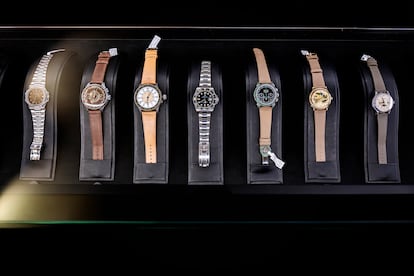

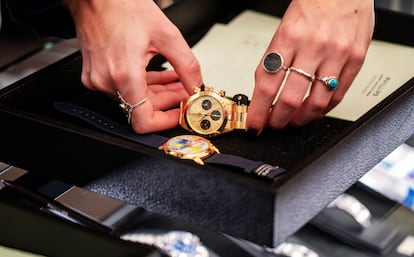
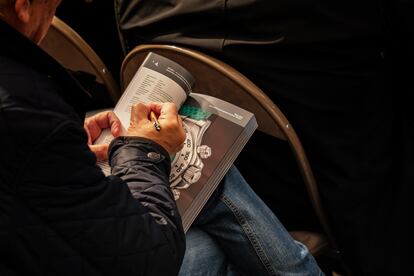
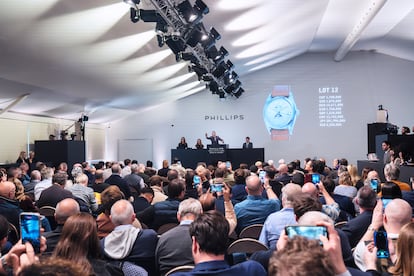
“The atmosphere here has nothing to do with a jewelry store, where you go to buy a watch and the employees whisper to ask you if you want another coffee. What we have here is action. An auction is like a stock market trading session.” Bacs has a silver tongue. The co-founder, with Livia Russo, of the specialized company Bacs & Russo, associated with Phillips and responsible for its watch division, has to his credit the greatest milestone in the history of the sector: in 2017 he sold a Rolex Daytona that used to belong to Paul Newman for more than $17 million. Although no other watch has come close to that amount since then, business is booming. In 2022, the watch division reached a total volume of $227 million, 10% more than the previous year, the highest annual result ever achieved by a department of this type.
The watch industry is going through a particularly sweet moment: Swiss watch exports broke records in 2022, reaching an all-time high of 23 billion Swiss francs (approximately $26.2 billion). The main brands report impressive figures with waiting lists, limited editions that sell out before they go on sale and a flourishing secondary market. In this context, auctions represent the most luxurious side, offering rare, antique or scarce models from cult brands — Rolex, Patek Philippe, Audemars Piguet or F.P. Journe occupy the top positions — to a market in top financial shape.
The Phillips auction in Geneva, which precedes those in Hong Kong and New York, is the annual highlight of the sector. Before it begins, Bacs weighs up his forecasts. It is a turbulent year, with international conflicts in Ukraine and Palestine. “But not everything that is happening in the world impacts everyone in the same way,” he points out. “Of course, the European and American stock markets are calmer than six months ago, but have you seen the price of gold? Bitcoin? Oil? There are many people with less money in their pockets, but also many people with more. It’s all contradictory and simultaneous. At the same time, the appetite for rare, quality watches is stronger than ever. I am optimistic, although cautiously.”
Although most international auction houses have watch departments, it is Bacs that has changed the game. This time 187 watches are on sale; they will be sold during two sessions that start at 2:00 p.m. Watches are paid for in cash, in Swiss francs. The pace is fast: approximately 20 models per hour. There are moments of tension and moments of calm, important pieces and lesser-known watches. “A good selection of watches is not a question of number. This time we have less than usual, but it is a very balanced auction. We have vintage models, contemporary watches, independent brands and some other rarities. A great auction is like a tasting menu: you can’t put seven meat dishes on it,” says Bacs.
Aurel Bacs was born in Switzerland, in a family fond of mechanics. “As a child I played with electric trains and I used to fix my own bicycle. I was fascinated by anything that moved and had motors or gears,” he recalls. In the 1970s, his father, an architect and former sports driver, became interested in antique watches and began taking his son to markets and antique shops. The spark caught on: when he was 12, Bacs asked for a book about watches as a Christmas present. “I remember reading it 20 times during the holidays, comparing models and references,” he says. After a while, what started as a hobby became his job. “Instead of finishing my law degree in Zurich, I took a position at an auction house in 1995 for a salary that was a third of what my classmates earned after graduating.”
Now, if the gavel is the auctioneer’s instrument, his most lasting work is the catalog. “When I started in the 1990s I made catalogs as my predecessors did in the 1980s: correct, but cold descriptions.” Transforming such a specialized market into a million-dollar passionate business required a change of language. “Why do people collect watches?” he asks. “For the same reason they collect art or cars. Nobody buys a 12-cylinder Ferrari to take their kids to school. For that you buy a Volkswagen Golf. Collecting is not a rational thing; it’s an emotional thing, and it makes no sense to describe it rationally. You have to describe what a watch means. The beauty of a golden face. The patina of a watch that was worn by a soldier in the Korean War. A watch that has been on the wrist of an emperor or Paul Newman.”
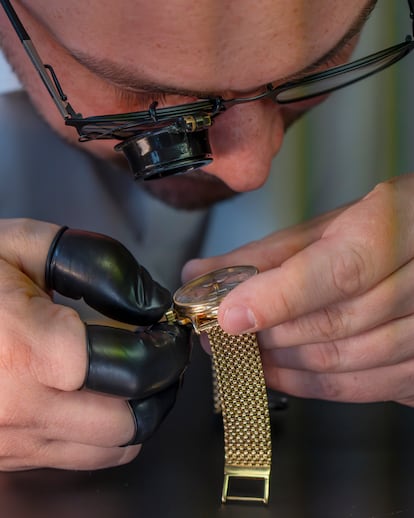
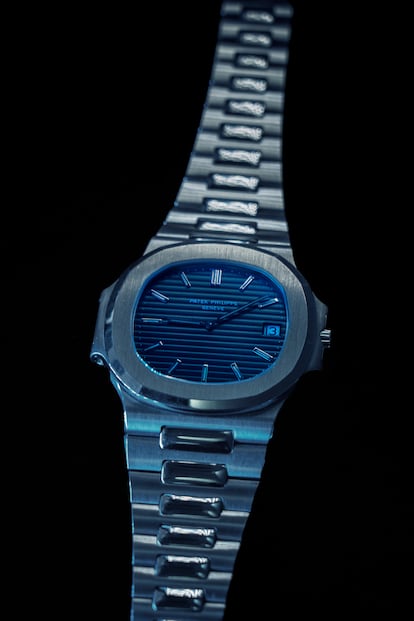
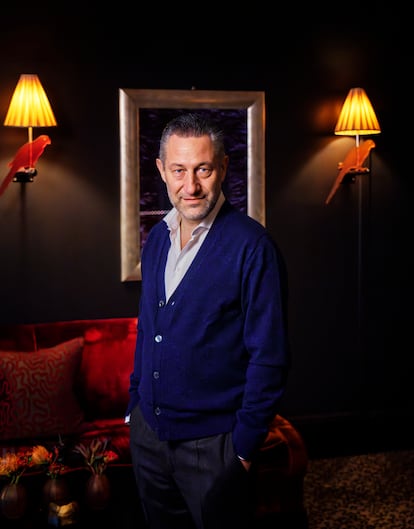
On the stands, surrounding the audience, a dozen agents speak to their clients by phone and bid on their behalf. Sometimes they get on the podium to relieve Bacs. At the microphone, they joke and cheer up the audience. They all speak in English, alternating with French, Italian, German or Chinese. They are experts; also small celebrities. Days before the auction, they show customers the watches that will be offered. That is often the only opportunity to see those nearly impossible-to-find museum pieces up close. “Even in times of war people continue reading, studying, learning, sharing their visions and dreams with other collectors,” explains Bacs. “Today, there are many more billionaires than 20 years ago. But there are still only four of some watches. What happens then? What they teach my daughter in high school: the principle of supply and demand.”
Maybe there is pure capitalist logic behind the watch boom, but its magnitude never ceases to impress. “When I first became interested in watches, you could buy a Patek Philippe 1518 for less than $10,000. Now it costs $1 million,” Bacs reflects. He takes a piece of paper and draws an upward curve with small peaks. “This is what the market has been like for the last 40 years,” he explains. “There have been several spikes and some corrections. But the market is growing.” He mentions some key moments: 1989, the first time that a watch reached $1 million, or 1999, when another model reached $11 million. Paul Newman’s Rolex marked a change of scale. “That morning, people asked me what price I thought it would reach. I said between $3 and $5 million. In the end it was $17 million for a vintage watch that, if it weren’t for its history, you could have bought for $150,000 or $200,000. With $17 million you can buy a Warhol or a Basquiat. For the first time, the world knew that we existed, and watches stopped being the peculiar hobby of a peculiar group of people.”
Among the audience there are gray-haired gentlemen with tweed jackets and printed scarves around their necks, as well as young people showing that the much talked-about “quiet luxury” does exist. They wear cashmere sports jackets, gray caps without logos, white sneakers, AirPods and mohair sweaters. A silent young Asian man with a cap raises his paddle and takes a lot for almost half a million. Three Italian twentysomethings talk quietly and check their cell phones to calculate currencies and commissions. In the front row, a couple of journalists look at the audience to make a mental note of who buys what. An elderly couple follows the auction attentively, highlighting figures. They could be discreet collectors, but they are Bacs’ parents. Their son, at the podium, with a green suit, carefully combed hair and a three-day stubble, practices his trade with the confidence of an orchestra conductor. He dispenses witticisms and poetic allusions to the watches, addresses the collectors, cheers on his colleagues and repeats the bids that come to him from the auction room as well as via phone and online, which is how the biggest operations are made. He modulates the rhythm of the bidding, which progresses well. Many watches exceed the estimates. A Patek Philippe Nautilus in platinum sells for more than 2.5 million Swiss francs, and a Rolex in stainless steel reaches 2.1 million. Two record figures bring the total to 39 million Swiss francs, although the last lot, a model belonging to the American diver Robert Palmer Bradley, remains unsold. On the other hand, a century-old model exceeds half a million. “The last time this watch was on sale, five years ago, it sold for less. That shows that in the last few years the public’s culture has increased. No one buys a watch like this just to show off to their friends.”
Sign up for our weekly newsletter to get more English-language news coverage from EL PAÍS USA Edition
Tu suscripción se está usando en otro dispositivo
¿Quieres añadir otro usuario a tu suscripción?
Si continúas leyendo en este dispositivo, no se podrá leer en el otro.
FlechaTu suscripción se está usando en otro dispositivo y solo puedes acceder a EL PAÍS desde un dispositivo a la vez.
Si quieres compartir tu cuenta, cambia tu suscripción a la modalidad Premium, así podrás añadir otro usuario. Cada uno accederá con su propia cuenta de email, lo que os permitirá personalizar vuestra experiencia en EL PAÍS.
¿Tienes una suscripción de empresa? Accede aquí para contratar más cuentas.
En el caso de no saber quién está usando tu cuenta, te recomendamos cambiar tu contraseña aquí.
Si decides continuar compartiendo tu cuenta, este mensaje se mostrará en tu dispositivo y en el de la otra persona que está usando tu cuenta de forma indefinida, afectando a tu experiencia de lectura. Puedes consultar aquí los términos y condiciones de la suscripción digital.
More information
Archived In
Últimas noticias
Most viewed
- Sinaloa Cartel war is taking its toll on Los Chapitos
- Oona Chaplin: ‘I told James Cameron that I was living in a treehouse and starting a permaculture project with a friend’
- Reinhard Genzel, Nobel laureate in physics: ‘One-minute videos will never give you the truth’
- Why the price of coffee has skyrocketed: from Brazilian plantations to specialty coffee houses
- Silver prices are going crazy: This is what’s fueling the rally











































